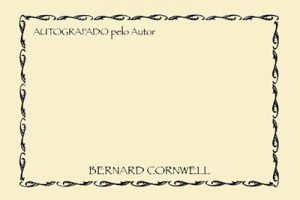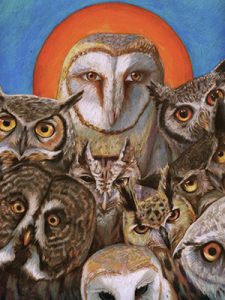Some weeks are more rewarding than others. This past weekend, I attended a party for a 90-year-old former neighbor and had an unexpected experience.
As many of you already know, Bookplate Ink primarily prints bookplate designs from the Antioch Bookplate Company, founded in 1926 by Ernest Morgan and Walter Kahoe while they were students at Antioch College in Yellow Springs, Ohio. The company later became the Antioch Company as they expanded their offerings to calendars, journals, etc.
Bookplate Ink, while still a part of the Yellow Springs News, our local newspaper, worked alongside the Antioch Company for many years, personalizing their bookplates. When the Antioch Company stopped printing bookplates and later, closed, Bookplate Ink, now its own company, acquired most of their designs so they would still be available to customers.
At the party I attended, I met a woman from Yellow Springs named Jan. As we chatted, I told her about my business, Bookplate Ink, and she responded that she worked for the Antioch Bookplate Company years ago. I asked what she did there, to which she replied — sheepishly — that she used to paste bookplates into their catalogs. I told her that my business still has some of these catalogs and I’d love to show them to her. Later, I slipped away from the party and brought back two of the catalogs, both from the 1950s.
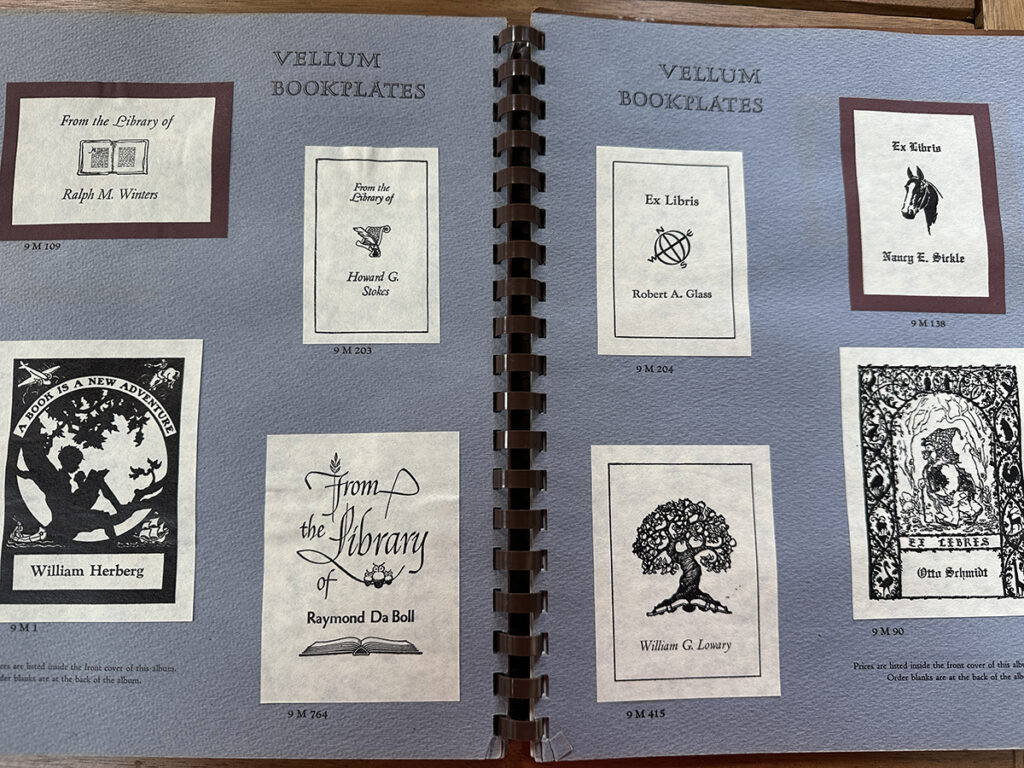 This was a magical moment. I was taken aback by how surprised and happy Jan was to see these catalogs. She was looking through them and mentioned that she still remembers the bookplates her mother had. When I asked which design it was, she said it had a tree. I pointed out the design shown on the right page in the photo above, which she recognized it as her mother’s bookplates. Her eyes teared up and she paused while she remembered her mom and the significance of her bookplates.
This was a magical moment. I was taken aback by how surprised and happy Jan was to see these catalogs. She was looking through them and mentioned that she still remembers the bookplates her mother had. When I asked which design it was, she said it had a tree. I pointed out the design shown on the right page in the photo above, which she recognized it as her mother’s bookplates. Her eyes teared up and she paused while she remembered her mom and the significance of her bookplates.
That bookplate uses artwork created by Robert Whitmore, a Yellow Springs artist who created many wonderful bookplate designs for Antioch Bookplate Company in the early days. We are still printing a version of the bookplate shown here, design B252, one of our most popular. Robert Whitmore’s artwork is special to me as I’m friends with his son, Jon Whitmore, who still lives in Yellow Springs on what had been his dad’s property. And I love having a small part in the history of bookplates and their meaning in people’s lives. Also amazing and fun for me, personally, is recognizing some of the names printed on the bookplates in these catalogs, as many of the descendants still live in our small village.
Two days later, Bookplate Ink received a very special testimonial from a longtime customer, George Pilcher. George has ordered several bookplate designs over the years, beginning in 2012. This is what he wrote after receiving his latest order:
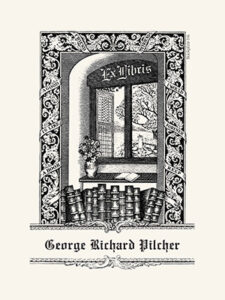 I have used Antioch Bookplates (now printed by Bookplate Ink) for over 65 years, and have received compliments from friends and fellow readers for all of those years. (I have many different styles, but my favorite has always been B253 – BOOKS BY OPEN WINDOW WITH EX LIBRIS TEXT), which I first began using in the mid-1950s.) My personal library (which has spilled, over the years, from the actual library room to the sitting room, the living room, the family room, and the loft, with other volumes scattered among the various bedrooms) comprises several thousand volumes, and they are all “plated by Antioch.” The owners of Bookplate Ink did readers everywhere a great service when they took over the Antioch catalogue, and their products are, if anything, even finer and higher-quality than those from the old Antioch Press, founded in 1926. It is absolutely wonderful that the owners of Bookplate Ink have chosen to make and sell products of the highest quality at an affordable price. In an age of “throwaway,” it is great to know that these splendid bookplates will be in my equally splendid book collection for as long as the books last. My hope is that many future generations will read books from my collection, and will be pleased to see the artistic statement of Antioch and the commitment to excellent workmanship of Bookplate Ink, when they open each volume.
I have used Antioch Bookplates (now printed by Bookplate Ink) for over 65 years, and have received compliments from friends and fellow readers for all of those years. (I have many different styles, but my favorite has always been B253 – BOOKS BY OPEN WINDOW WITH EX LIBRIS TEXT), which I first began using in the mid-1950s.) My personal library (which has spilled, over the years, from the actual library room to the sitting room, the living room, the family room, and the loft, with other volumes scattered among the various bedrooms) comprises several thousand volumes, and they are all “plated by Antioch.” The owners of Bookplate Ink did readers everywhere a great service when they took over the Antioch catalogue, and their products are, if anything, even finer and higher-quality than those from the old Antioch Press, founded in 1926. It is absolutely wonderful that the owners of Bookplate Ink have chosen to make and sell products of the highest quality at an affordable price. In an age of “throwaway,” it is great to know that these splendid bookplates will be in my equally splendid book collection for as long as the books last. My hope is that many future generations will read books from my collection, and will be pleased to see the artistic statement of Antioch and the commitment to excellent workmanship of Bookplate Ink, when they open each volume.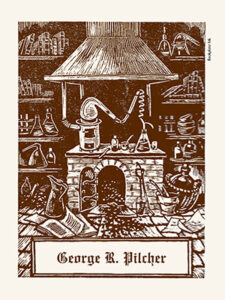
Needless to say, this message made my day. Not only was George very complimentary to Bookplate Ink, but he so aptly describes his love of books and the significance of bookplates. George has ordered several designs, including the one designed for chemists by Dutch woodcut artist, Thijs Mauve chemist, M604, shown at the right. George requested this printed in brown ink. But he says his favorite is still B253, shown above.
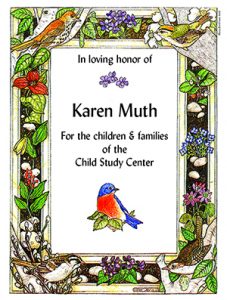 More than a year and a half ago — which now seems in the distant past — we had an order requested for bookplates for a wonderful and loving project: a book area for children at the Child Study of Center of Yale School of Medicine, in honor of the beloved Director of Finance and Administration there, Karen Muth, who was losing her long battle with cancer. Karen was able to help choose the design she wanted before she passed. As her friend Jean Herzog, who placed the order, wrote, “books will be chosen by the faculty and staff for children and families who are dealing with childhood cancer. Karen dealt with her own cancer for more than eight years and was very touched that her friends and family chose to remember her this way.”
More than a year and a half ago — which now seems in the distant past — we had an order requested for bookplates for a wonderful and loving project: a book area for children at the Child Study of Center of Yale School of Medicine, in honor of the beloved Director of Finance and Administration there, Karen Muth, who was losing her long battle with cancer. Karen was able to help choose the design she wanted before she passed. As her friend Jean Herzog, who placed the order, wrote, “books will be chosen by the faculty and staff for children and families who are dealing with childhood cancer. Karen dealt with her own cancer for more than eight years and was very touched that her friends and family chose to remember her this way.”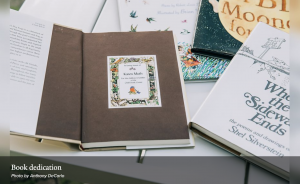
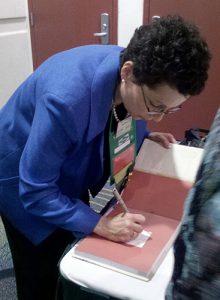 Authors have had to cancel book tours and signings since the pandemic occurred. And, of course, libraries and bookstores are closed, so books are being purchased online.
Authors have had to cancel book tours and signings since the pandemic occurred. And, of course, libraries and bookstores are closed, so books are being purchased online.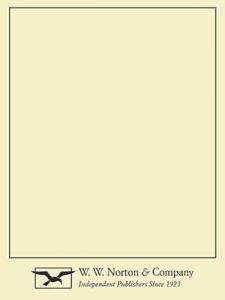 While in-person signings have now been canceled, more and more authors and publishers are using bookplates to continue to stay in touch with their readers. We have had several orders from loyal customer
While in-person signings have now been canceled, more and more authors and publishers are using bookplates to continue to stay in touch with their readers. We have had several orders from loyal customer 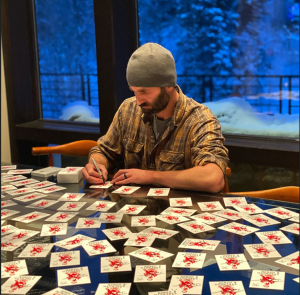 New York Times Bestselling author and former U.S. Navy Seal Jack Carr, who wrote Savage Son, True Believer and The Terminal List, recently re-ordered bookplates for True Believer.
New York Times Bestselling author and former U.S. Navy Seal Jack Carr, who wrote Savage Son, True Believer and The Terminal List, recently re-ordered bookplates for True Believer. 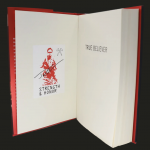 He sells the signed bookplates on his website at
He sells the signed bookplates on his website at 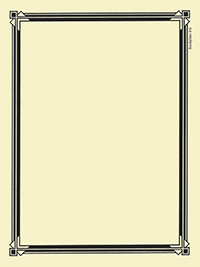
 Recently, I had the pleasure of visiting Basel, Switzerland. Basel is a beautiful city on the banks of the Rhine, with houses and buildings dating back to the 1600s. There are many museums there, including art museums, a toy museum, a caricature and cartoon museum, and a music museum.
Recently, I had the pleasure of visiting Basel, Switzerland. Basel is a beautiful city on the banks of the Rhine, with houses and buildings dating back to the 1600s. There are many museums there, including art museums, a toy museum, a caricature and cartoon museum, and a music museum. 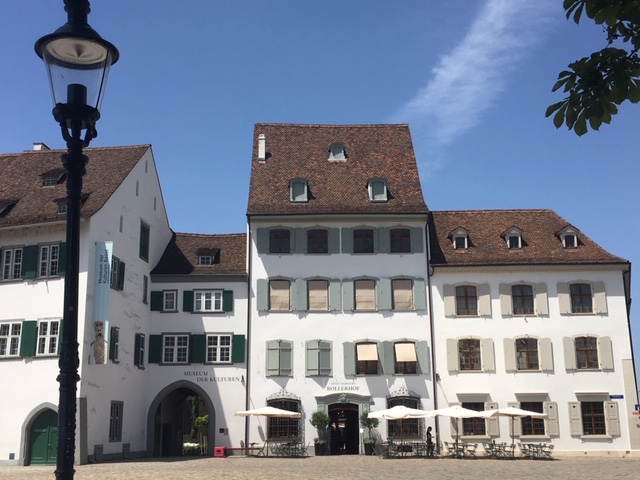
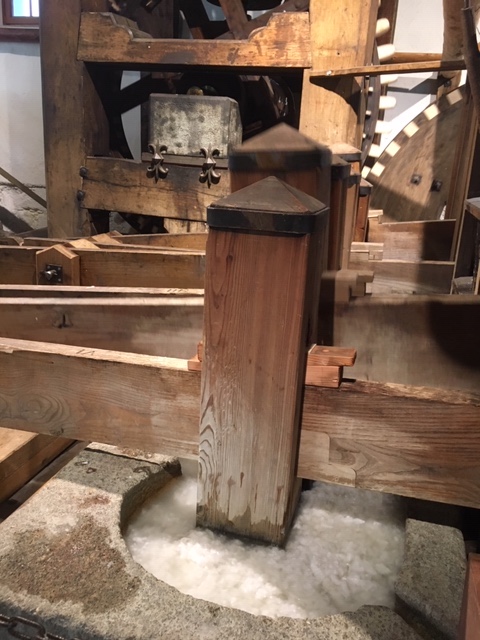 On the first floor, visitors are able to not only view paper being made, but try their hand at it also. The photo on the left shows a mixture of pulp and water being mashed together while the one on the right shows the back end of the machinery.
On the first floor, visitors are able to not only view paper being made, but try their hand at it also. The photo on the left shows a mixture of pulp and water being mashed together while the one on the right shows the back end of the machinery. 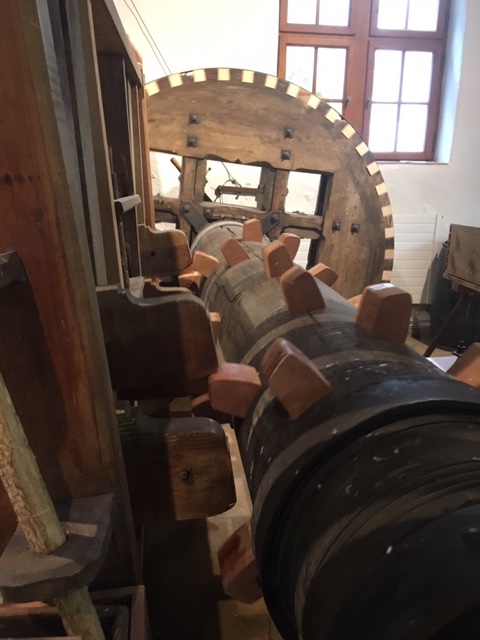
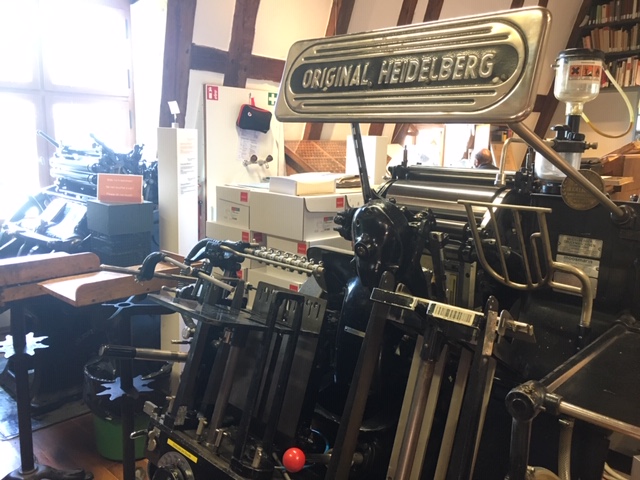 And, of course, it was thrilling to find bookplates amongst the print samples in the shop, The bookplate shown below is one I’d seen online.
And, of course, it was thrilling to find bookplates amongst the print samples in the shop, The bookplate shown below is one I’d seen online. 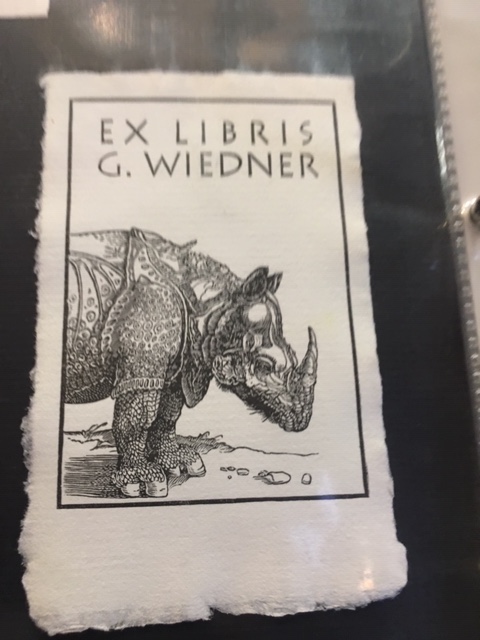
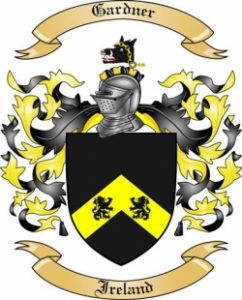 The traditional use of bookplates, begun in the 15th century, is to identify the owner of a book. Bookplates, also known as ex libris, are usually decorative, with artwork that is meaningful to the book owner. Often they show the family coat of arms or some particular area of interest to the owner. Many well-known figures have used bookplates and many well-known artists have created them over the years, but they are available for anyone to use.
The traditional use of bookplates, begun in the 15th century, is to identify the owner of a book. Bookplates, also known as ex libris, are usually decorative, with artwork that is meaningful to the book owner. Often they show the family coat of arms or some particular area of interest to the owner. Many well-known figures have used bookplates and many well-known artists have created them over the years, but they are available for anyone to use.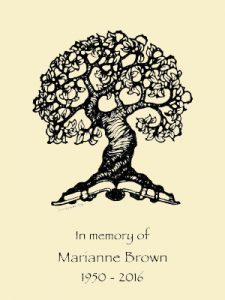 iven in memory of a favorite teacher or librarian.
iven in memory of a favorite teacher or librarian.